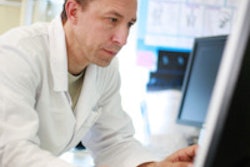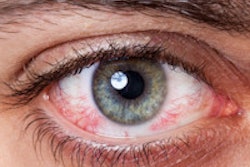Dear AuntMinnieEurope Member,
After a frustrating and stressful day in the hospital or clinic, Facebook, Twitter, and other websites can be a great way of letting off steam, but this can also be fraught with danger.
Used effectively, social media can bring real benefits, but healthcare professionals need to tread very carefully, warn U.K. experts. To read their words of wisdom, go to our PACS Community, or click here.
For many years, researchers from across the globe have presented high-quality information at the RSNA poster hall. Only a select few get a Magna Cum Laude award, and we've got a news report about one of the top-ranking exhibits that featured ground-breaking MRI research. Get the details here.
Radiation protection remains an urgent priority for the imaging community, so a new survey of radation dose is bound to generate substantial interest. Visit our Cardiac Imaging Community, or click here.
Meanwhile, a Dutch group has used lung segmentation and nonrigid registration to deform prior CT lung scans and subtract them from the new scans, thereby highlighting any changes that occurred since the last acquisition. Computer-aided detection applied to the coregistered images found almost three-quarters of the relevant changes while maintaining a low false-positive rate. Click here for the full story.
Individual radiologists may not always go about interpreting an imaging study in the same manner on PACS as their colleagues, but these variations don't typically result in differences in reading times, according to research presented at RSNA 2015. To find out more, click here.
Last but definitely not least, our editorial advisory board member Dr. Elias Brountzos from Athens and his colleagues have provided a case report about a 56-year-old man with a history of right upper lobectomy due to lung adenocarcinoma. To test yourself, click here.



















